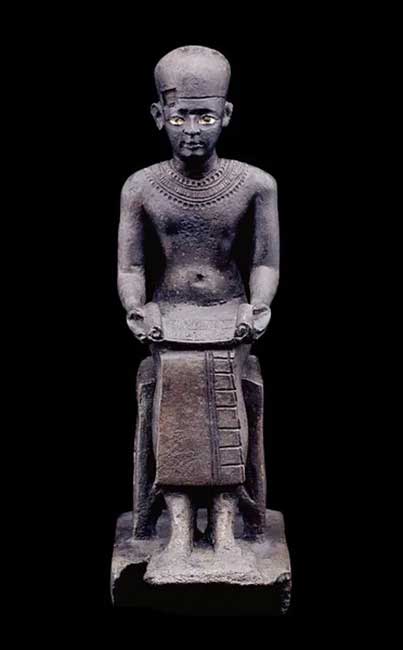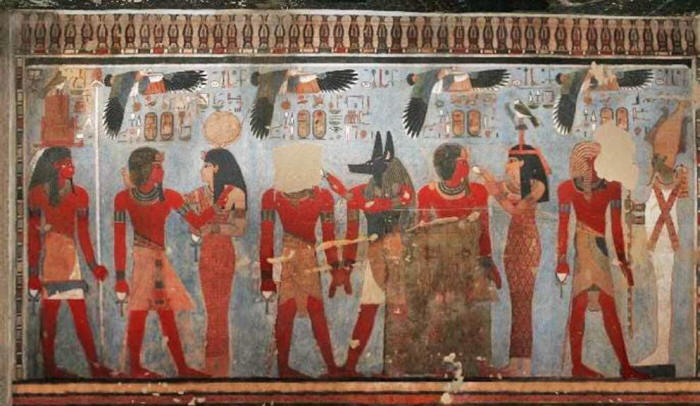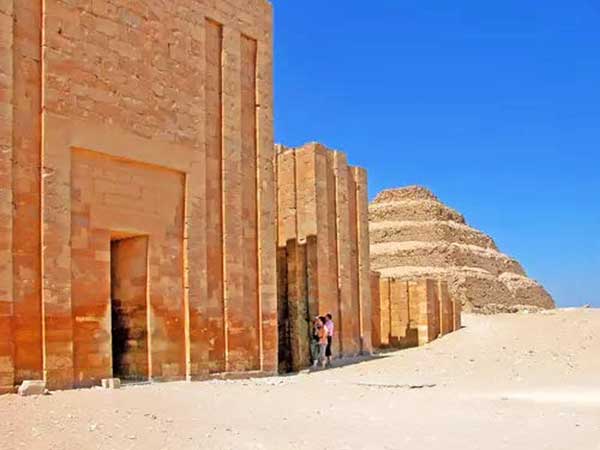|
Imhotep
British
Museum
in the formulation of wise proverbs; in medicine and architecture; this remarkable figure of Djoser's reign left so notable a reputation that his name was never forgotten. He was the patron spirit of the later scribes, to whom they regularly poured out a libation from the water-jug of their writing outfit before beginning their work."
Egyptologist
James Henry Breasted
He was a high vizier, chief physician, an architect to the Egyptian Pharaoh Djoser, as well as a high priest to the sun god Ra at Heliopolis.
...Imhotep was one of
ancient Egypt's most celebrated figures, famously glorified over the
3 millennia following his death... as well as deified...
They even came to associate his name with that of a demigod, which was very unusual for someone who was not a pharaoh (or even a royal).
Eventually he was spoken
of as being both son of Ptah, and later as synonymous with the god
Thoth himself.
Addressed to the owner of a tomb, it reads:
This is a composite of several photographs.
This tradition of his
glorification celebrates him not only as the great architect (which
he undoubtedly was) but as an author of wisdom, a chief of seers,
and especially as a physician.
Despite his great fame,
the location of his tomb remains unknown, although it is suspected
to be somewhere in Saqqara.
The temple in Memphis was dedicated to him (which the Greeks called the Asklepion) and surrounded by a famous school of magic, medicine, and a hospital.
This temple became a place of pilgrimage for the sick and infertile as well as for the studious.
Indeed, the famous Greek
physician Hippocrates, the father of medicine, is said to
have studied there and the
Edwin Smith Papyrus (an
astounding 1600 BC account of the treatment of 48 cases of wounds,
fractures, dislocations, and tumors) has been theorized by some to
be a copy from an old-kingdom source, possibly written by the great
physician himself.
From the rectangular, flat mastaba, Imhotep conceived a square tomb base made with limestone with many levels above it.
His structure required strengthening and feats of engineering because it was much more complex, balancing a tremendous weight in order to build for eternity.
in
Saqqara
In Djoser's monumental burial complex called "The Refreshment of the Gods", the main temple contains this innovation of very large columns.
Imhotep might be
considered in this sense the 'father to Vitruvius' (the Roman
architect and engineer during the 1st century BC known
for his multi-volume work entitled
De architectura) as well as the
grandfather or patron saint to all classical architects.
The Egyptian priest and historian Manetho (writer of The History of Egypt) credited Imhotep with the invention of the method of fine stone-dressing, which was practiced by stonemasons ever since.
Though he was certainly
not the first to build with stone, he was the first to make a fine
art of monumentalism and to develop the fineness technique in stone
construction.
We will never know for sure, though perhaps this is in part because Imhotep was also associated with other fantastic feats, such as ending the seven-year famine that occurred during the reign of Djoser... by having a dream in which he spoke with the Nile god, who promised to end the drought.
He was said to send to
sleep to those who were suffering or in pain. Additionally, there is
a papyri depicting Imhotep dueling an Assyrian sorceress in a battle
of magic during a war between Egypt and Assyria.
They attest to the abilities of a master architect who designed structures that remain marvels and miracles to this day.
A man whose work was so impressive that he himself became divine.
|




